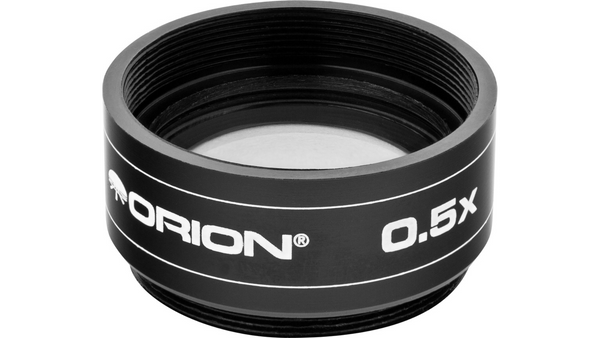Orion 0.5x Focal Reducer for StarShoot G3/G4 Imaging Camera (52066)
52066


Orion 0.5x Focal Reducer for StarShoot G3/G4 Imaging Camera (52066)
52066
Why Purchase from All-Star Telescope?
Free Expert Support
Whether you are a first timer needing help with setting up or an enthusiast that can't quite make that one thing work, our expert staff are ready to support your needs. With decades of knowledge and first hand experience we've been there and we can help you through it!
Stress Free, Secure Transactions
You can trust purchasing and delivery with All-Star Telescope. All of our transactions are 100% secure and Level 1 PCI DSS compliant thanks to Shopify's ShopPay platform. For additional protection, we insure 100% of the value of every shipment we make. If it get's lost during shipment, we replace it. If it gets damaged during shipment, we replace it. We make sure your product arrives exactly as you would expect it to; we promise.
We also ensure privacy protection. We never keep any of your credit card information on file and any of your personal data is stored according to our policies.
30 Day Return Policy
Buy with confidence knowing that we accept returns up to 30 days after purchase. We want you to have something you will actually use and we are confident that we keep good quality products in our store with No Junk.
Price Match Promise
Shipping around for the best price is tough, we make it easier by offering the best pricing in the market. But if you find a better price on an in-store item somewhere else we will match it!
Product Description
This 0.5x focal reducer increases the area imaged by your StarShoot camera by a factor of 4. The reducer threads into the 1.25" nosepiece found on our StarShoot G3 or G4 imaging cameras to effectively reduce the focal length of the imaging telescope by half.
The larger imaging area allows capture of larger star fields and deep-sky objects that may not fit entirely in your telescope's normal field of view.
The Orion 0.5x Focal Reducer for StarShoot G3 or G4 Imaging Cameras has a two-element lens design, with antireflection coatings applied to all air-to-glass lens surfaces. The lenses are set in a rugged anodized aluminum cell that is threaded to accept 1.25" Orion filters.

